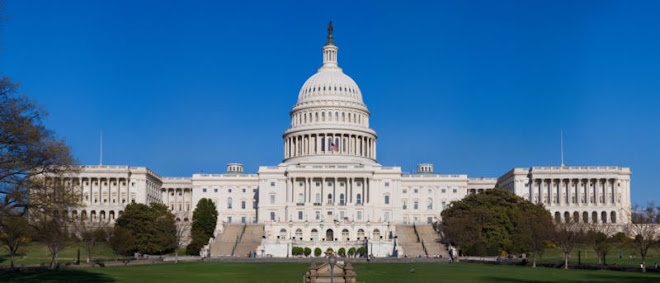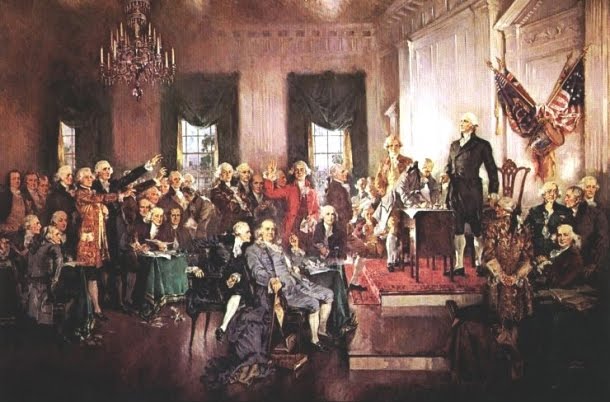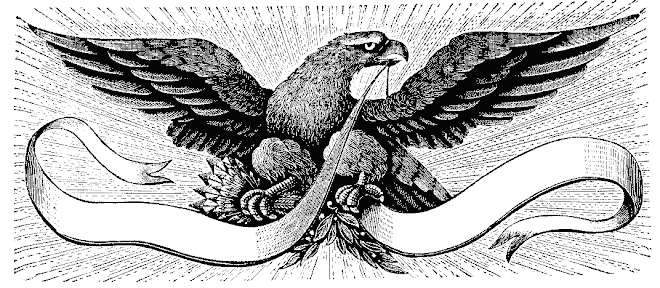From The Heritage Foundation:
The Truth About Tax Cuts
All you are likely to hear about low tax rates from liberals and their echo chamber in the media is that they don't work—that they fail to gin up economic or job growth. Exhibit A for this preposterous proposition is the Bush tax cuts. The left wants you to accept it as conventional wisdom that the policy was a bust.
Don't believe it. The tax cuts enacted by the U.S. Congress in 2003 were an important cause of an economic expansion that roared for some 50 months and created 8.1 million jobs. The opposite philosophy—a stimulus that has crowded out private investment, plus an enormous health bill and a nightmarish financial regulatory package that are killing job creation—has only delayed recovery and left us with 9.1% unemployment.
You won't hear this from liberals. What you hear instead is a straw man argument that the tax cuts failed to pay for themselves. The Bush Administration and congressional leaders at the time went out of their way to be clear that the tax cuts were not expected to pay for themselves.
Bereft of any other apparent principle, the liberal canon now includes one and only one organizing idea: government cannot be cut; it can only grow or stay at its current gargantuan size. For that to happen, liberals must use the concerns about massive deficits pushed up by a tremendous Obama spending surge to cow the nation into accepting big tax hikes and bigger government. Unfortunately, even some otherwise conservative stalwarts are falling for it.
But rather than explicitly say "raise taxes" liberals talk about "revenue enhancements" (which somehow liberals think the American people won't get), "fairness" and "shared sacrifice."
But for that to work the American people must be made to accept that lower taxes fail to stimulate anything and that, by implication then, higher taxes won't hurt the economy. This why liberals work so hard to spin the Bush years. But here's what really happened:
President Bush signed the first wave of tax cuts in 2001, cutting rates and providing tax relief for families by, for example, doubling of the child tax credit to $1,000.
At Congress' insistence, the tax relief was initially phased in over many years, so the economy continued to lose jobs. In 2003, realizing its error, Congress made the earlier tax relief effective immediately. Congress also lowered tax rates on capital gains and dividends to encourage business investment, which had been lagging.
It was the then that the economy turned around. Within months of enactment, job growth shot up, eventually creating 8.1 million jobs through 2007. Tax revenues also increased after the Bush tax cuts, due to economic growth.
In 2003, capital gains tax rates were reduced. Rather than expand by 36% as the Congressional Budget Office projected before the tax cut, capital gains revenues more than doubled to $103 billion.
The CBO incorrectly calculated that the post-March 2003 tax cuts would lower 2006 revenues by $75 billion. Revenues for 2006 came in $47 billion above the pre-tax cut baseline.
Here's what else happened after the 2003 tax cuts lowered the rates on income, capital gains and dividend taxes:
GDP grew at an annual rate of just 1.7% in the six quarters before the 2003 tax cuts. In the six quarters following the tax cuts, the growth rate was 4.1%.
The S&P 500 dropped 18% in the six quarters before the 2003 tax cuts but increased by 32% over the next six quarters.
The economy lost 267,000 jobs in the six quarters before the 2003 tax cuts. In the next six quarters, it added 307,000 jobs, followed by 5 million jobs in the next seven quarters.
The timing of the lower tax rates coincides almost exactly with the stark acceleration in the economy. Nor was this experience unique. The famous Clinton economic boom began when Congress passed legislation cutting spending and cutting the capital gains tax rate.
In late 2007 the economy began to cool. By 2008, it entered a recession. The housing bubble burst, precipitating a financial crisis. But after 50 months of unimpeded growth, it is ludicrous to insist that the tax cuts caused the recession, let alone the global financial meltdown. Even after the Fannie and Freddie Mac-induced bust, there were still one million net jobs created during the Bush years.
President Obama inherited a difficult economic situation but made a robust recovery less likely by embracing a failed Keynesian economic philosophy based on deficit spending. The blast of stimulus the federal government gave the economy far exceeded anything previously contemplated in the textbooks. It is shocking that there are still a few who actually insist that the stimulus failed only because it was too small and want to double down on another one.
Since tax revenues move up and down with GDP, the common-sense way to increase tax revenues is to expand the economy. This should start with a commitment not to raise taxes. Beyond that commitment, pro-growth policies such as revenue-neutral tax reforms dedicated to reducing tax rates, restrained federal spending, minimal regulation and free trade would raise more tax revenues than would be raised by self-defeating tax increases.
In The Heritage Foundation's plan, Saving the American Dream, issued last month, we call for tax reform. We lower tax rates to encourage economic growth but maintain tax revenues at 18.5% of GDP—their historical level. We do it by expanding the tax base by eliminating economically unjustified deductions and credits and we plow all those revenues back into keeping rates low.
Liberals want to raise your taxes because they love big government. They will tell you that lower tax rates accomplish nothing, but government spending will. Don't buy it.
You can follow Mike Gonzalez on Twitter @Gundisalvus
The Truth About Tax Cuts
All you are likely to hear about low tax rates from liberals and their echo chamber in the media is that they don't work—that they fail to gin up economic or job growth. Exhibit A for this preposterous proposition is the Bush tax cuts. The left wants you to accept it as conventional wisdom that the policy was a bust.
Don't believe it. The tax cuts enacted by the U.S. Congress in 2003 were an important cause of an economic expansion that roared for some 50 months and created 8.1 million jobs. The opposite philosophy—a stimulus that has crowded out private investment, plus an enormous health bill and a nightmarish financial regulatory package that are killing job creation—has only delayed recovery and left us with 9.1% unemployment.
You won't hear this from liberals. What you hear instead is a straw man argument that the tax cuts failed to pay for themselves. The Bush Administration and congressional leaders at the time went out of their way to be clear that the tax cuts were not expected to pay for themselves.
Bereft of any other apparent principle, the liberal canon now includes one and only one organizing idea: government cannot be cut; it can only grow or stay at its current gargantuan size. For that to happen, liberals must use the concerns about massive deficits pushed up by a tremendous Obama spending surge to cow the nation into accepting big tax hikes and bigger government. Unfortunately, even some otherwise conservative stalwarts are falling for it.
But rather than explicitly say "raise taxes" liberals talk about "revenue enhancements" (which somehow liberals think the American people won't get), "fairness" and "shared sacrifice."
But for that to work the American people must be made to accept that lower taxes fail to stimulate anything and that, by implication then, higher taxes won't hurt the economy. This why liberals work so hard to spin the Bush years. But here's what really happened:
President Bush signed the first wave of tax cuts in 2001, cutting rates and providing tax relief for families by, for example, doubling of the child tax credit to $1,000.
At Congress' insistence, the tax relief was initially phased in over many years, so the economy continued to lose jobs. In 2003, realizing its error, Congress made the earlier tax relief effective immediately. Congress also lowered tax rates on capital gains and dividends to encourage business investment, which had been lagging.
It was the then that the economy turned around. Within months of enactment, job growth shot up, eventually creating 8.1 million jobs through 2007. Tax revenues also increased after the Bush tax cuts, due to economic growth.
In 2003, capital gains tax rates were reduced. Rather than expand by 36% as the Congressional Budget Office projected before the tax cut, capital gains revenues more than doubled to $103 billion.
The CBO incorrectly calculated that the post-March 2003 tax cuts would lower 2006 revenues by $75 billion. Revenues for 2006 came in $47 billion above the pre-tax cut baseline.
Here's what else happened after the 2003 tax cuts lowered the rates on income, capital gains and dividend taxes:
GDP grew at an annual rate of just 1.7% in the six quarters before the 2003 tax cuts. In the six quarters following the tax cuts, the growth rate was 4.1%.
The S&P 500 dropped 18% in the six quarters before the 2003 tax cuts but increased by 32% over the next six quarters.
The economy lost 267,000 jobs in the six quarters before the 2003 tax cuts. In the next six quarters, it added 307,000 jobs, followed by 5 million jobs in the next seven quarters.
The timing of the lower tax rates coincides almost exactly with the stark acceleration in the economy. Nor was this experience unique. The famous Clinton economic boom began when Congress passed legislation cutting spending and cutting the capital gains tax rate.
In late 2007 the economy began to cool. By 2008, it entered a recession. The housing bubble burst, precipitating a financial crisis. But after 50 months of unimpeded growth, it is ludicrous to insist that the tax cuts caused the recession, let alone the global financial meltdown. Even after the Fannie and Freddie Mac-induced bust, there were still one million net jobs created during the Bush years.
President Obama inherited a difficult economic situation but made a robust recovery less likely by embracing a failed Keynesian economic philosophy based on deficit spending. The blast of stimulus the federal government gave the economy far exceeded anything previously contemplated in the textbooks. It is shocking that there are still a few who actually insist that the stimulus failed only because it was too small and want to double down on another one.
Since tax revenues move up and down with GDP, the common-sense way to increase tax revenues is to expand the economy. This should start with a commitment not to raise taxes. Beyond that commitment, pro-growth policies such as revenue-neutral tax reforms dedicated to reducing tax rates, restrained federal spending, minimal regulation and free trade would raise more tax revenues than would be raised by self-defeating tax increases.
In The Heritage Foundation's plan, Saving the American Dream, issued last month, we call for tax reform. We lower tax rates to encourage economic growth but maintain tax revenues at 18.5% of GDP—their historical level. We do it by expanding the tax base by eliminating economically unjustified deductions and credits and we plow all those revenues back into keeping rates low.
Liberals want to raise your taxes because they love big government. They will tell you that lower tax rates accomplish nothing, but government spending will. Don't buy it.
You can follow Mike Gonzalez on Twitter @Gundisalvus










No comments:
Post a Comment